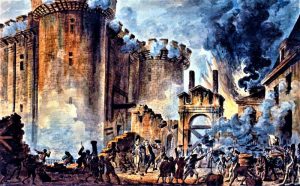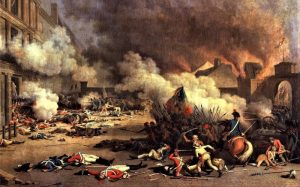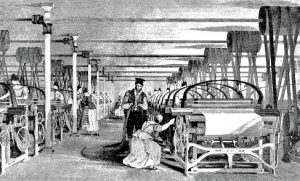Storming of the Bastille
The Bastille was a fortress of great power that dominated all the popular neighborhoods that were in the east of Paris. It was a symbol of absolute monarchy and was a fortification that had been created against the Englishmen during the Hundred Years War, which Richelieu had later turned into a prison. On July 14, 1789, an angry mafia made up of very aggressive Parisian workers attacked this state prison in eastern Paris. The prison had become a symbol of the dictatorial government of the monarchy, and the Storming of the Bastille became one of the decisive moments of the Revolution that followed this event.

- When it happened: 14/07/1789
- Where did it happen: Paris, France
What was the Storming of the Bastille?
The Storming of the Bastille was an event in which Parisian workers took up arms and entered the Bastille building. It is considered the first step towards the French Revolution, as it continued until it murdered King Louis XVI and his family at the guillotine.
Summary of the Storming of the Bastille
The French Revolution was a social and political process that developed in France between 1789 and 1795, which sought to create a new code of laws, of freedom, equality and fraternity, and which main objective was to create a Republic. This Revolution began with an armed revolution that was the trigger for all new ideas to begin to emerge, and the main and first great revolt was the Storming of the Bastille.
A medieval fortress, the eight 30 meter high towers of the Bastille, dominated the Parisian horizon. When the prison was attacked, it had only seven prisoners, but the mafia had come to demand a huge amount of munitions that were kept inside the prison walls.
In the beginning, people did not want to take over the prison and only went with the idea of reclaiming the weapons, gunpowder and bullets from the governor in order to fight against the royal troops. However, when the governor of the prison refused to comply, the opponents started a violent battle, and finally they took over the building. The governor was kidnapped and killed; his head was dragged through the streets on a stick.
First, the representatives were greeted with education within the fortress, but were unable to obtain any results. Moments later, a delegation made up of Jacques Alexis Hamard and Louis Ethis tried again to carry out a negotiation to obtain the weapons, but this negotiation did not obtain results either, and the settlers began to get impatient. A few hours later, the chains of the bridge that led to the inner courtyard were cut and a bloody battle began.
The authorities tried to stop the fight without obtaining positive results. The Storming of the Bastille symbolically marked the beginning of the French Revolution, in which the monarchy was overthrown, and a republic was established based on the ideas of “the French for freedom, equality and fraternity.
Causes of the Storming of the Bastille
Among the main causes that gave rise to the Storming of the Bastille we can mention the following:
- There was a weakening of the sectors attached to Louis XVI and royalty, because there was a general displeasure caused by the payment of high taxes in order to maintain the luxuries of the monarchy and pay the expenses of the war.
- The formation of the National Constituent Assembly, and the new Constitution that had its origin in the year 1789.
- The elimination of the General States as a sign of rebellion and insurrection.
- The fact that acted as a detonator and marked the beginning of the French Revolution, which, due to the wear and tear of the Monarchy, had already been forged between nobles, the people and the clergy, who were already tired of so many abuses from the royalty.
Consequences
The main consequences that arose after the Storming of the Bastille, were the decision to eliminate feudalism, legally and institutionally, in order to avoid people’ rebellions. To achieve this, a fair price was set for the land and guilds and corporations were eliminated. The bourgeoisie sought the union of the internal market.
Another consequence of the Storming of the Bastille was the agrarian and social revolution in the French countryside. The peasants attacked castles and stately homes with weapons; they set fire to the buildings of the tax offices, which so disrespectfully taxed them. The peasants destroyed the feudal regime, and the assembly legally eliminated it.
Characters from the Storming of the Bastille
Among the most important figures we can mention King Louis XVI, Minister Necker of Finance, the General States, the clergy and the oligarchs. Some of the most outstanding were:
- The Marquis de La Fayette, was one of his contemporaries who was designated commander of the National Guard of Paris after the revolts of July 1789.
- Jean-Sylvain Bailly, Jacques Alexis Hamard Thuriot and Louis Ethis of Corny, who were members of the delegation that entered the Bastille to try to reach a peaceful resolution before the capture.
- Claude Fauchet, member of the third delegation that entered the building to try to speak with the Mayor of the Bastille.
- Pierre-Augustin Hulin, the sergeant of the Swiss Guard, who, seeing no progress, orders to open fire with the weapons taken in the Bastille Fortress.
How to cite this article?
Briceño V., Gabriela. (2019). Storming of the Bastille. Recovered on 3 January, 2025, de Euston96: https://www.euston96.com/en/storming-of-the-bastille/









